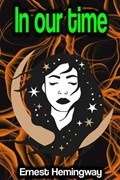In our time - Ernest Hemingway - In Our Time is the title of Ernest Hemingway's first collection of short stories, published in 1925 by Boni & Liveright, New York, and of a collection of vignettes published in 1924 in France titled in our time. Its title is derived from the English Book of Common Prayer, "Give peace in our time, O Lord". The collection's publication history was complex. It began with six prose vignettes published by Ezra Pound in the 1923 edition of The Little Review, to which Hemingway added twelve vignettes and had published in Paris in 1924 as the in our time edition (with a lower-case title). He wrote fourteen short stories for the 1925 edition, including "Indian Camp" and "Big Two-Hearted River", two of his best-known Nick Adams stories. He composed "On the Quai at Smyrna" for the 1930 edition. Ernest Miller Hemingway (July 21, 1899 – July 2, 1961) was an American novelist, short-story writer, and journalist. His economical and understated style—which he termed the iceberg theory—had a strong influence on 20th-century fiction, while his adventurous lifestyle and public image brought him admiration from later generations. Hemingway produced most of his work between the mid-1920s and the mid-1950s, and he was awarded the 1954 Nobel Prize in Literature. He published seven novels, six short-story collections, and two nonfiction works. Three of his novels, four short-story collections, and three nonfiction works were published posthumously. Many of his works are considered classics of American literature. Hemingway was raised in Oak Park, Illinois. After high school, he was a reporter for a few months for The Kansas City Star before leaving for the Italian Front to enlist as an ambulance driver in World War I. In 1918, he was seriously wounded and returned home. His wartime experiences formed the basis for his novel A Farewell to Arms (1929). In 1921, he married Hadley Richardson, the first of four wives. They moved to Paris where he worked as a foreign correspondent and fell under the influence of the modernist writers and artists of the 1920s' "Lost Generation" expatriate community. Hemingway's debut novel The Sun Also Rises was published in 1926. He divorced Richardson in 1927, and married Pauline Pfeiffer. They divorced after he returned from the Spanish Civil War (1936–1939), which he covered as a journalist and which was the basis for his novel For Whom the Bell Tolls (1940). Martha Gellhorn became his third wife in 1940. He and Gellhorn separated after he met Mary Welsh in London during World War II. Hemingway was present with Allied troops as a journalist at the Normandy landings and the liberation of Paris.

